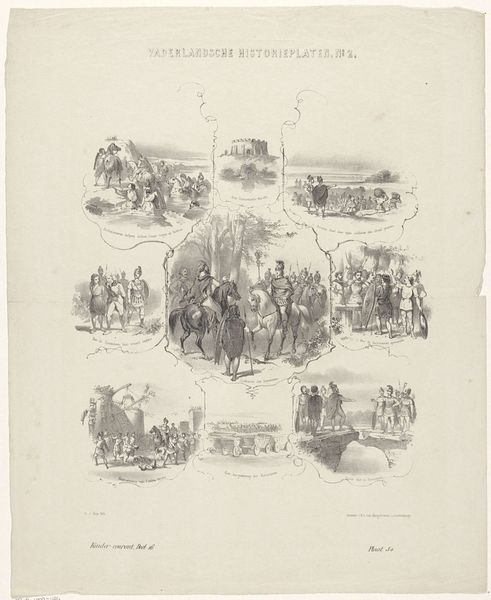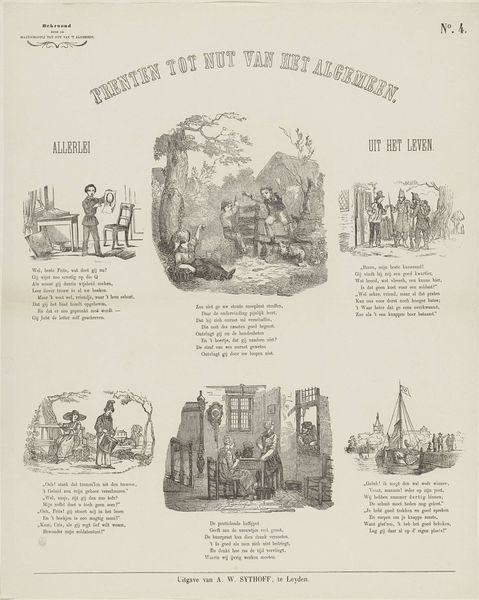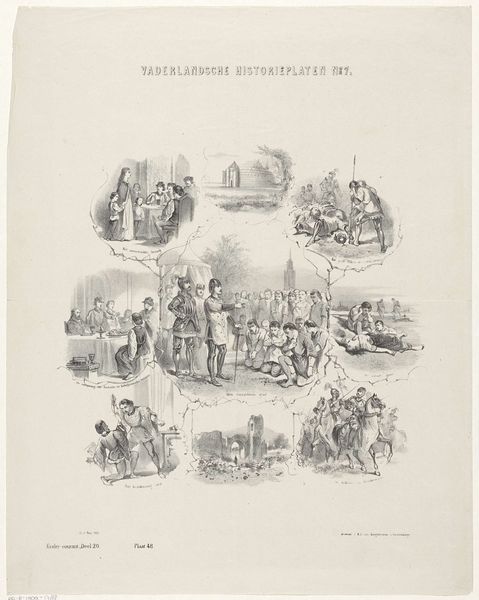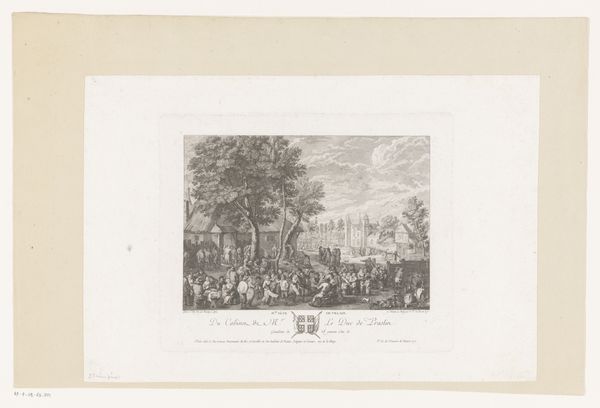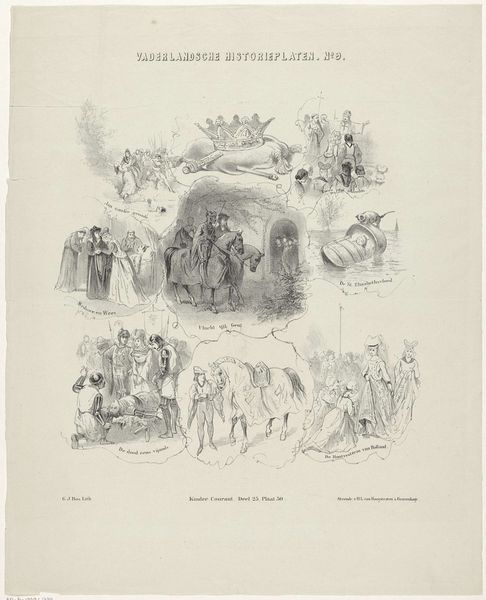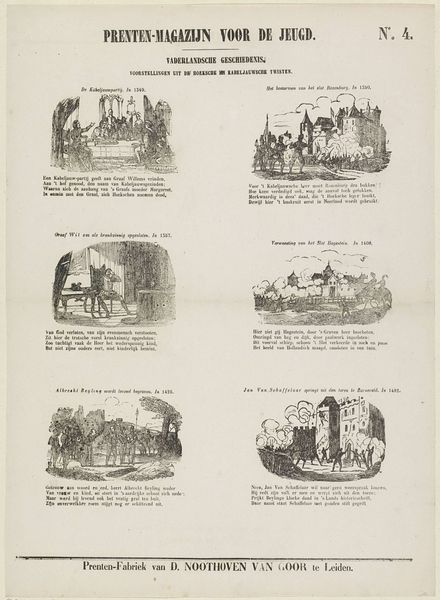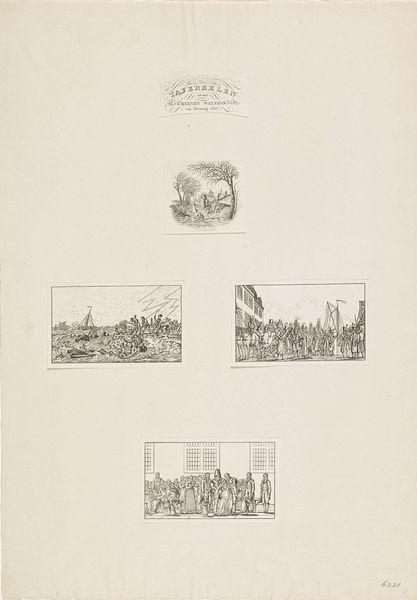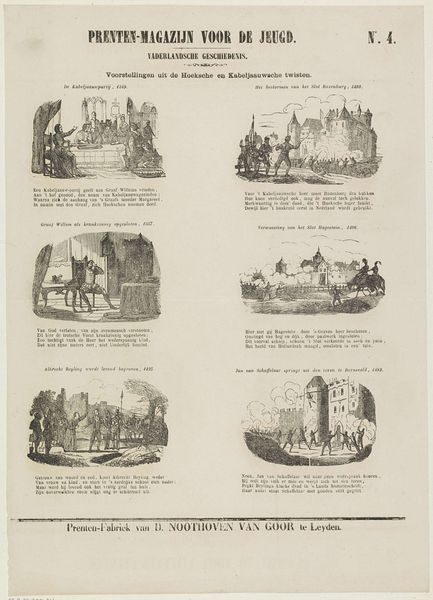
graphic-art, print, engraving
#
graphic-art
# print
#
history-painting
#
engraving
Dimensions: height 356 mm, width 515 mm
Copyright: Rijks Museum: Open Domain
Editor: This is "Héroïsme Belge. 1832," an engraving made in 1833. It almost looks like a political cartoon, with several small vignettes depicting scenes from Belgian history, or perhaps recent events. It feels propagandistic, even a little comical despite the "Héroïsme" title. What stands out to you? Curator: The title itself is revealing. By presenting these events as 'Belgian Heroism,' the print actively constructs a national narrative. Consider when it was made - just a few years after Belgium gained independence. Visual media played a vital role in shaping national identity, creating shared memories, and promoting political ideologies. How might this image have influenced public opinion at the time? Editor: Well, seeing all these supposedly heroic scenes together definitely paints a flattering picture of the young nation. There are vignettes ranging from skirmishes at sea to tense moments in cities, and soldiers defending a city. So how does its presentation, in a print sold and reproduced widely, help with solidifying the country's idea of itself? Curator: Exactly! Prints like this democratized visual narratives. Unlike large-scale paintings accessible only to the elite, prints were relatively affordable and circulated widely through newspapers and as individual sheets. This accessibility allowed for the broad dissemination of nationalistic sentiment, shaping popular memory of the Belgian Revolution, presenting the Belgians as brave, independent and resourceful. The medium itself participates in nation-building. Editor: So it's not just about showing heroic acts, but also *how* these stories are distributed that matters. I see now that something seemingly simple and old, a humble print, tells a bigger story about creating shared beliefs. Thanks! Curator: Precisely. Thinking about the artwork in its social and political context unveils the active role art plays in shaping our perceptions of history and national identity. It challenges us to consider how seemingly objective representations can serve very particular agendas.
Comments
No comments
Be the first to comment and join the conversation on the ultimate creative platform.
